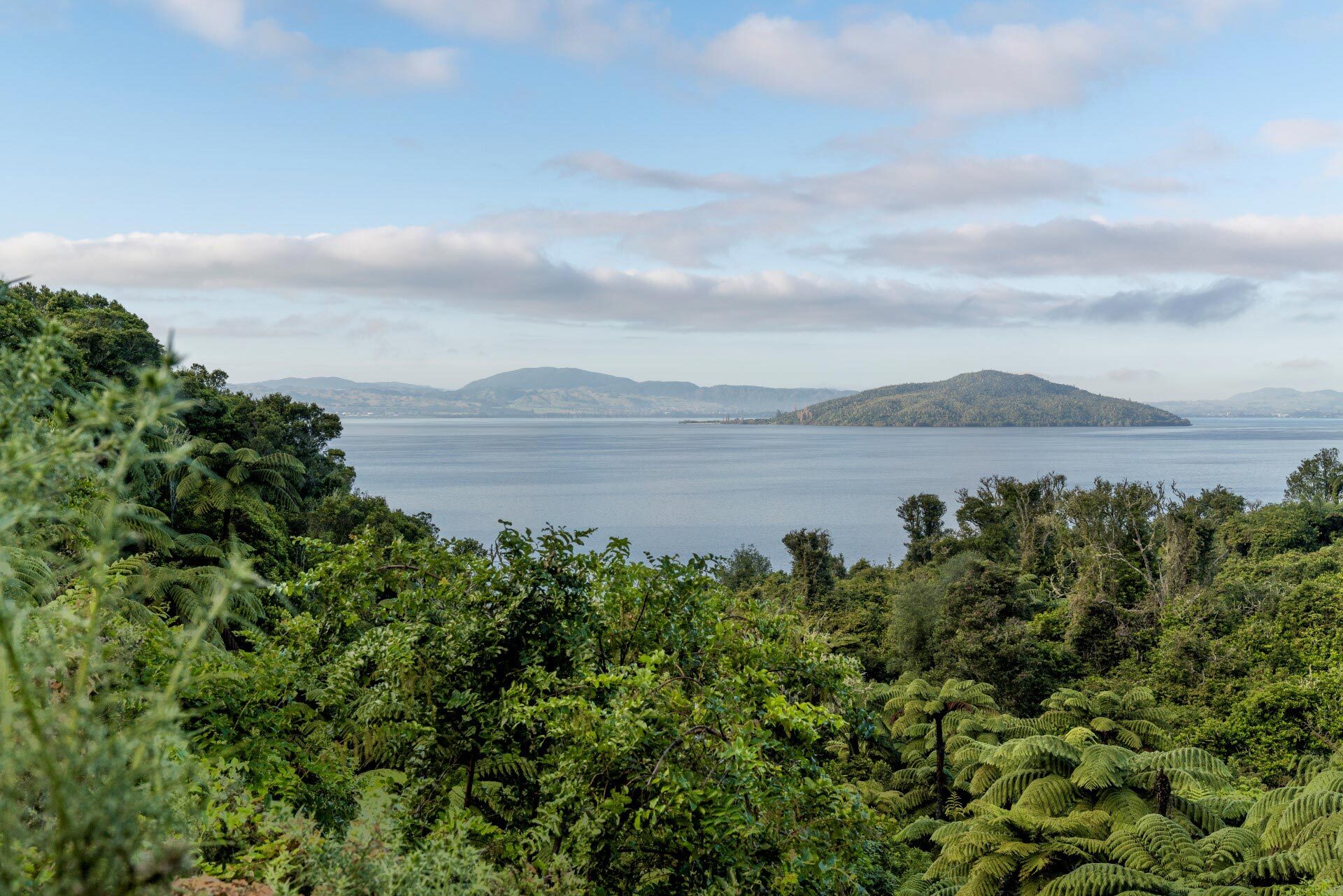Lake Rotorua
With the city of Rotorua on its shores, Lake Rotorua is loved by locals and tourists alike. Surrounded by lush farmland, native bush and steaming geothermal springs and vents, the lake has a distinct dark green-yellow colour due to its high content of sulphur and other volcanic minerals. A fan of trout fishing? You’re in for a treat – Lake Rotorua is considered the most productive trout fishery in New Zealand.
Lake Rotorua is the largest lake in the district. Although beautiful and peaceful, this lake has a violent history – it was one of several large volcanoes in the region and was formed when an underlying magma chamber collapsed after a massive eruption around 200,000 years ago.
MOKOIA ISLAND
Mokoia Island, which sits in the centre of Lake Rotorua, is the most famous lake island in the country and linked to the love story of Hinemoa and Tutanekai. It tells the tale of young chief Tutanekai and his high-born love, Hinemoa, whose family forbade her from marrying him. To stop the young lovers meeting, the family beach the couple’s waka (canoe) but in answer, Tutanekai plays his flute, the music wafting across Lake Rotorua every night. Overcome with love, Hinemoa swims to him, buoyed by gourds, only to find Tutanekai has returned to his whare (house) to sleep. Arriving at Mokoia Island naked, she’s unable to enter the village, so she immerses herself in a hot pool. Tutanekai’s slave arrives and Hinemoa lures him, smashes his gourd and sends him back to his master. An enraged Tutanekai investigates, only to fall into Hinemoa’s embrace.

Today, Mokoia Island is a sanctuary for endangered birds and wildlife.